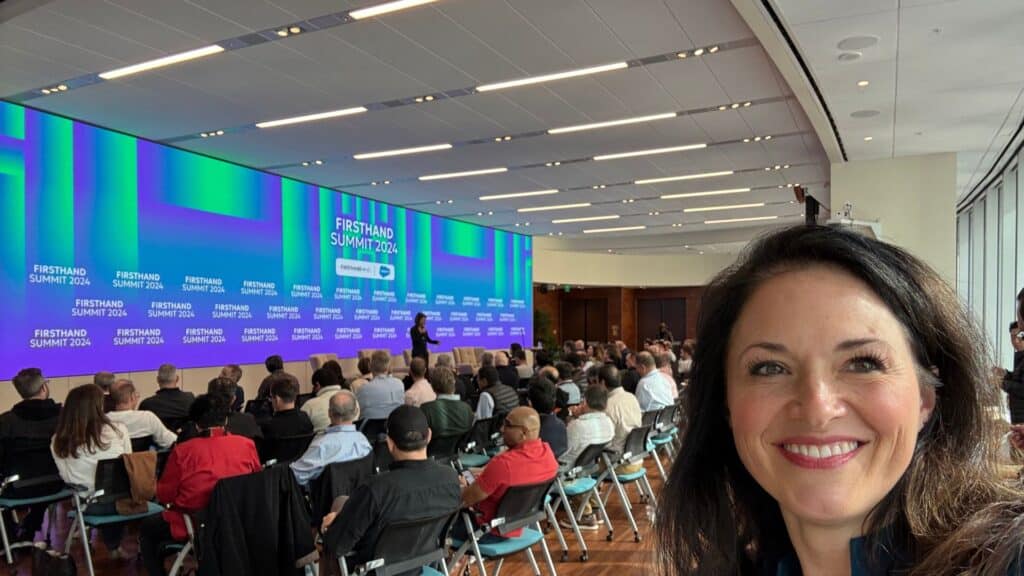From leading sales teams to mastering revenue operations, Whitney Merrill’s professional journey in RevOps and Go to Market has been about blending technology, processes, and people.
In this episode of Go To Market with Dr. Amy Cook, Whitney describes RevOps as a three-legged stool where each leg represents these critical elements: technology, processes, and people. This blend creates a strategic powerhouse that drives revenue success. For Whitney, it’s not just about data or sales alone; it’s about uniting these pillars to form a RevOps-driven center of excellence.
Don’t miss this fascinating discussion where Whitney talks about AI, GTM, RevOps COE, and channels his inner Scotty from Star Trek to illustrate the integral function of revenue operations leaders and their impact on driving the company’s ship toward well-orchestrated revenue growth. Here are some highlights:
Amy: Explain the value of creating a tech stack services catalog for your company.
Whitney: A services catalog includes all of the services you provide, such as forecasting and visibility, planning and compensation, quote to cash, and lead management—and all these different variables that you have to provide. When you break them apart and look at those 50–60 services that your function is providing, you need to look at each of them as a capability and a maturity.
Using a rating of one to five, if you have a system and a capability that is at a five, you’re good to go; we can hit that. But if you activate a service that is not ready for prime time, you’re pulling out spreadsheets in the back of a pickup truck and trying to hammer it out in the dark.
Understanding where and when your capability is ready to go and is online—whether it’s people, process, or technology—and assessing those services and being able to manage, deliver, and explain that to leadership so they understand it’s not just a no, it’s not just a defer. It’s showing them that this is what I’m going to need to do right now for you; here’s what I do next quarter, and here’s what I can do next quarter.
Amy: Tell me how your Star Trek metaphor describes the impact the pandemic had on digital transformation.
Whitney: I think the pandemic changed everything regarding what’s happening now. I remember going from an annual planning cycle to a yearly planning cycle with a mid-year check-in to a quarterly, and then to a monthly review. It hasn’t changed. It hasn’t stopped since then.
It reminds me of Star Trek because you have the ship that you’re running through the universe, and you have the person at the helm saying we need to move. They call down to engineering, which is RevOps, and say, “You know, Scotty—because he symbolizes RevOps— we need warp speed.”
Scotty sees that we’re operating on impulse power, so he realizes we must change our strategy quickly. What makes Scotty so effective is that he’s in the engine room managing the people down there while gathering data and information, but he’s also on the deck making those calls. Captain Kirk will try to press that accelerator button for revenue, so he has to have the right information at a moment’s notice to be able to give that guidance.
Amy: It’s clear that you are at the very top of your game when it comes to RevOps. I really like your perspective, and your framework is outstanding. How do you stay on top of your game?
Whitney: I think that it comes from being on the front lines. Being a sales leader, handling customer calls and support calls, and selling to customers are, I believe, things you have to keep in touch with at all times.
When we all sat together with sales when that was available before a lot of us became remote and moved around the world, I would sit with the sales teams and listen. I would sit with the customer teams and listen to their calls.
I think being on a customer call and a customer-facing engagement call at least once a month is a minimum for a RevOps leader. You have to sit in their shoes and listen. The other thing, apart from that, and it sounds like a great best practice, is, remember: you’ll have to go back at some point to the CRO when they want to pivot and make a change. These are the nuggets that I usually bring.
Sure, I can say, “Remember the problem we had during the pandemic?” But if I can say I was on this call with this large enterprise customer, and they expressed this need related to what you’re trying to do, and I have those nuggets in real time, it changes your ability to have that real conversation with them.
Listen to the full podcast episode here.
Tune in weekly to hear new conversations with some of today’s most innovative RevOps leaders.











